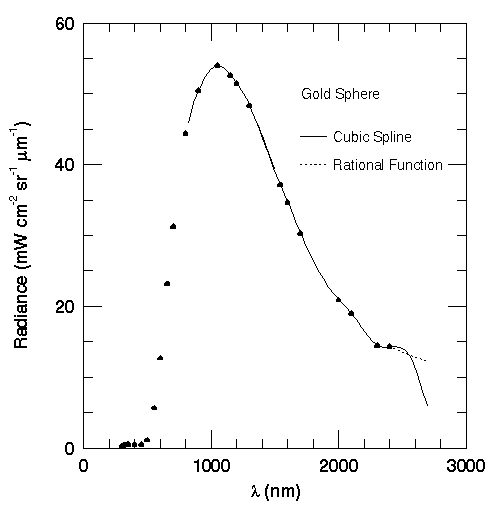
NIS Calibration Report #11
Jim Bell and Andy Switala; 7/18/95
Issue:
Radiometric Calibration from May OCF tests
NOTE: The next several reports will be rather crude because we don't have time to spit and polish them properly. We will concentrate on showing major results rather than talking about details of derivations...
Methods:
(1) Use the May 13-15 OCF data for NIS placed on retro by Scott. In particular, we examined the blocks at the end of file NIEMH02.135
(2) 10 measurements were made in each block of data. We calculated averages and standard deviations for each block and plotted the results to verify data quality.
(3) The data were divided by data taken with the silica window in place to get a correction factor for the window. The original data were multiplied by this correction factor and divided by the radiance of the gold sphere to radiometrically calibrate the NIS. The radiance of the sphere at wavelengths less than 2400 was found using cubic spline interpolation on the factory-supplied radiance info (Fig. 1). Its radiance above 2400 nm was estimated using rational function extrapolation (from Numerical Recipes), which gave values that graphically appear a reasonable extension of the radiance vs. wavelength curve. However, the highest wavelength detectable by the InGaAs detector is far enough above 2400 that any radiometric calibration of the last channel or two using extrapolation is suspect.

Figure 1: Gold sphere radiance data, along with our cubic spline and rational function fits.
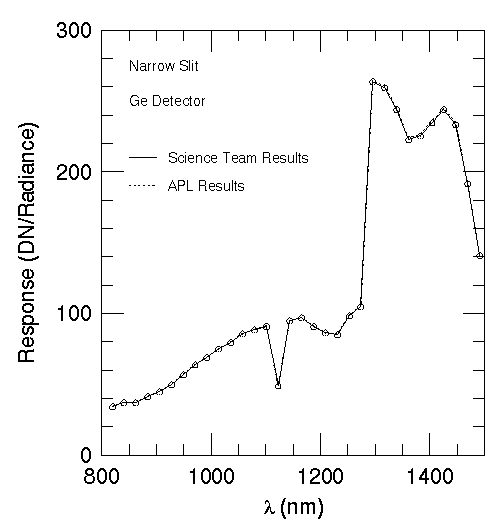
Figure 2: Radiometric calibration of the Ge detector with the narrow slit. The Science-Team derived curve is the solid line. For comparison, the curve derived by Kieth Peacock at APL is shown as a dashed line.
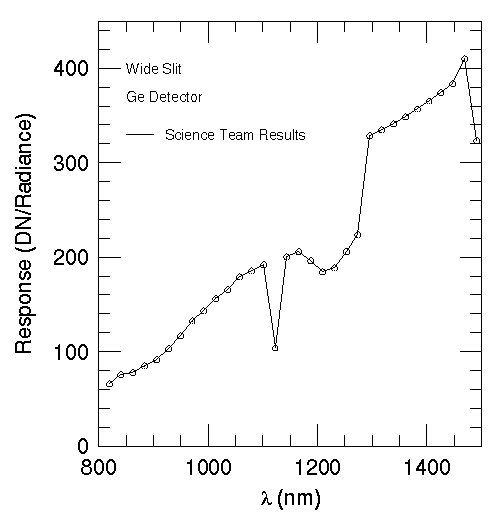
Figure 3: Radiometric calibration of the Ge detector with the wide slit. The Science-Team derived curve is the solid line. No APL results for the wide slit have been presented yet for comparison.
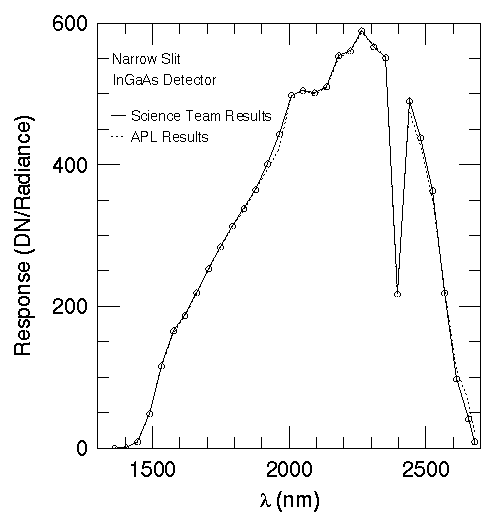
Figure 4: Radiometric calibration of the InGaAs detector with the narrow slit. The Science-Team derived curve is the solid line. For comparison, the curve derived by Kieth Peacock at APL is shown as a dashed line.
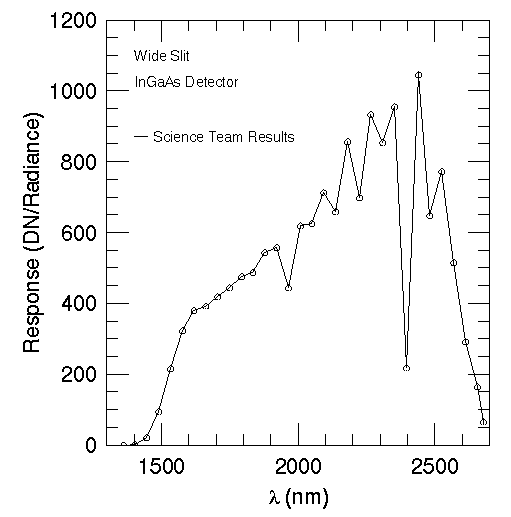
Figure 5: Radiometric calibration of the InGaAs detector with the wide slit. The Science-Team derived curve is the solid line. No APL results for the wide slit have been presented yet for comparison.
Summary of Results:
There is excellent agreement between the Science Team and APL's derivation of the NIS narrow slit radiometric calibration. There are systematic differences between the SCience Team's calibration of the wide and narrow slits, beyond the expected simple increase in responsivity. These differences need to be explored and understood further.